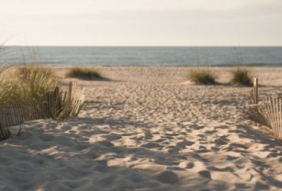
Posted on July 14, 2016
By Zach Murdock, Herald-Tribune
Siesta Key residents and businesses have pledged to block a long-planned and controversial plan to bolster Lido Key beaches using sand from the channel between the two keys.
The long-rumored lawsuit to stop the U.S. Army Corps of Engineers use of about 950,000 cubic yards of sand from the shoals in Big Pass to address extensive erosion along 1.6 miles of Lido’s southern beaches will be filed as soon as the final state permit necessary for the work is issued, Siesta Key resident Peter van Roekens said last week.
His group, Save our Siesta Sand 2, has begun fundraising for the effort and is now publicly confirming it will try to block the project amid fears that any alterations in Big Pass could threaten more erosion on Siesta beaches.
The group has raised $62,000 so far — and has pledges for more contributions — from individuals, businesses, the Siesta Key Chamber of Commerce and the Siesta Key Village Association, van Roekens said.
“We’re going to raise whatever it takes to fight this,” he said. “The reason is this is a real threat to Siesta Key.”
That final permit is expected to be approved by the state Department of Environmental Protection as soon as mid-August or early September, setting up a showdown this fall that could further tie down the already years-long battle in lengthy court proceedings that leave starved Lido beaches without any aid.
Despite the sometimes bitter fight the plans have become over the past several years, all sides agree that Lido Key needs a long-term renourishment solution.
But with roadblocks almost certain to at least stall, if not completely derail, the planned project, there is no “Plan B” for another type of renourishment project, Sarasota city engineer Alex DavisShaw said last week.
“Whatever gets done has to be permitted, so in order for us to do a different plan, we have to design and permit somewhere else and that could take another two years,” she said. “Trucking sand in from the center of the state is still going to be cost prohibitive, Longboat will still have just used New Pass (dredged sand), so we would still need to look at something in Big Pass.
“The second concern is that we only have so much money, and if we use the money for something else, we don’t have it for the long-term Lido project,” she continued. “All those things we’ve done for this project, we would have to do again.”
The only reasonable potential option could be to do a subset of the planned project without objection from Save our Siesta Sand 2 because the modeling and permitting would already be prepared, DavisShaw suggested. But no one from van Roekens’ group, Lido Key, the Army Corps or the city have seriously evaluated that kind of option, she said.
Instead, serious discussion of any alternatives would likely have to wait until the challenge to the permit is filed, leaders said.
In the meantime, Lido residents are worried the looming fight will leave the key caught in the middle with no options.
Sand continues to dwindle, particularly at the south-end of the key around Ted Sperling Park, and the key was hard-hit during the relatively tame effects of Tropical Storm Colin, Lido Key Residents Association President Carl Shoffstall said. There are times during storms when water reaches the retaining walls at the sound-end condominium buildings and water splashes into their pools, DavisShaw said.
“It’s gone,” he said of South Lido Beach.
Ultimately the only feasible long-term solution to Lido Key beach renourishment plans is to dredge from Big Pass and follow the Army Corps’ plans for sand placement, a groin and frequent monitoring of potential effects, Shoffstall and DavisShaw argued.
But this spring a consultant’s report on the plans raised questions about the data and models used to create them. Unless engineers can definitively prove work done in Big Pass would not affect Siesta’s famous beaches, which some critics believe is inevitable, the plans cannot move forward, van Roekens countered.
“They say don’t fix it if it ain’t broke, but look at it out there,” Shoffstall said. “They’ve already screwed with the system … Unfortunately as human beings, we have a tendency to screw things up, but we have to plan and manage it better than we are now.
“We’re washing into the water and we’ve gotta do something.”
Source: Herald-Tribune





